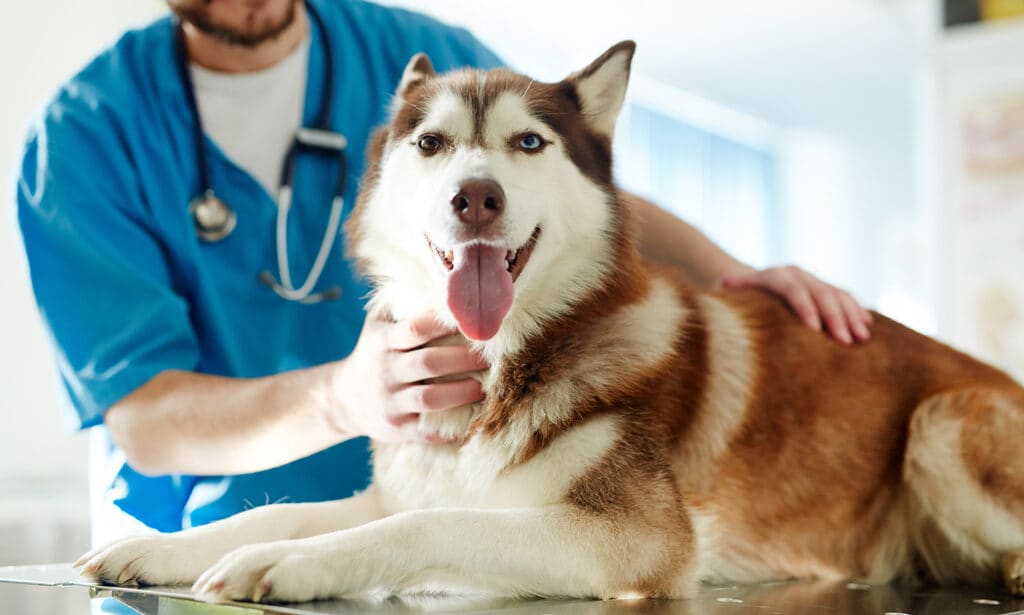

Dogs are curious creatures. They explore the world around them using their senses, especially smell and taste. But that curiosity can lead our furry friends into trouble when they encounter something potentially poisonous or toxic.
Certain foods, chemicals, plants and fertilizers can all be toxic to dogs, and harmful exposure can happen through ingestion, inhalation and contact with the skin.
So, what do you do if you suspect your dog has been poisoned? We not only discuss the best steps to take to help your pup, but we also identify the signs of dog poisoning and more.
Not sure whether that thing your dog just ate is dangerous? We’ve rounded up the most common substances that cause poisoning in dogs below—but keep in mind that this is not a complete list of dangerous substances for dogs.
If you are unsure whether your dog has been poisoned, it is best to contact a veterinarian or veterinary poison control hotline like the ones below for advice:
Chocolate, caffeine, raisins, grapes, onions, garlic, alcohol, sugar-free items that contain xylitol
Type of SubstanceCold medications, vitamins such as vitamin D3, antidepressant medications, pain relievers like acetaminophen, ibuprofen and naproxen
Type of SubstanceHome and Garden Products
Fertilizer and plant foods, antifreeze, pool chemicals, bleach, detergents, house paints, wood stains
Type of SubstanceInsecticides and Anti-Pest Products
Bug repellents, bug sprays, ant bait, roach baits, rat bait, slug and snail bait, gopher bait
Type of SubstanceLily, sago palm, foxglove, mistletoe, oleander, dieffenbachia (Find out more about poisonous plants for pets.)
It’s important to remember that veterinary medications can be harmful to pets if not administered properly—even ones prescribed to your pet! Overdose or misuse (aka use in another species, another dose or frequently than prescribed) can result in toxicity. Use all veterinary products as directed and prescribed.
The symptoms and signs of dog poisoning can vary, depending on the type of toxin and the part of the body affected. In addition, dog poisoning symptoms can develop very quickly or be delayed by several hours, making it difficult to know if poisoning occurred.
Symptoms that may indicate your dog has been poisoned include:
If you see these signs in your dog, or you suspect your pet has been poisoned, follow the steps below.
First things first: Stay calm. There are several things you can do to help your dog.
If you witness your dog ingest or come into contact with a toxic substance, remove that substance from their reach immediately. This could mean moving it to a higher place your dog can’t reach, or in the case of a spill, removing your dog from the room without access to the area of the spill. This will prevent further ingestion or contact.
Before you call or visit a veterinarian, quickly make note of the substance you believe has poisoned your dog. If you’re able to tell your vet exactly what your pup has ingested, that will help your veterinarian determine the best treatment.
If you’re headed to your vet’s office or a veterinary ER (more on that below), it’s a good idea to bring the toxic substance and/or its packaging with you—but only if you can safely do so. Do not risk exposure to yourself and others if you cannot safely transport the substance.
Not sure what poisoned your pet? Don’t worry—it’s OK to skip this step and move on to contacting or visiting a vet.
How you proceed next will depend on your pet’s condition:
If your dog shows these signs, they should be seen by a veterinarian right away:
Transporting a sick pet can be difficult for both you and your dog. Keep these tips in mind:
No, do not induce vomiting unless your vet tells you to do so.
While it may seem like a good idea to induce vomiting if your dog has eaten something dangerous, it may not be appropriate or safe for your dog, and can do more harm than good in some situations. Do not try to make your dog vomit at home unless instructed to do so by a veterinarian.